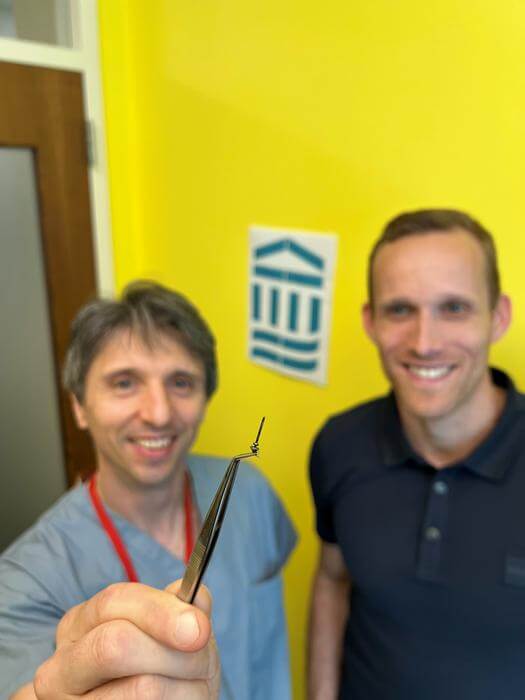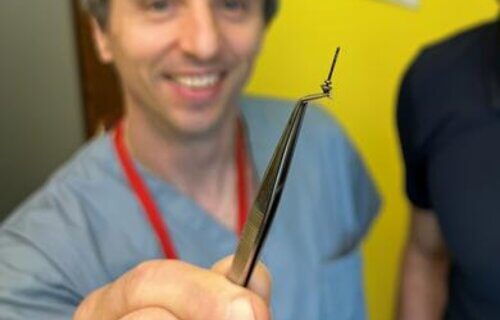BOSTON — Imagine a device as small as a grain of rice but with the power to change how we treat brain cancers. That’s precisely what researchers from Brigham and Women’s Hospital have developed. This tiny device may help doctors better understand and treat gliomas — stubborn brain and spinal cord tumors.
Every year, about 20,000 people in the U.S. get the news that they have gliomas. Not only are gliomas one of the deadliest forms of brain cancer, but these tumors are also notoriously difficult to treat. One big challenge in developing a treatment for gliomas is that testing many different combinations of medications on a patient poses great difficulty. Oncologists can only treat patients with one treatment option at a time.
“In order to make the greatest impact on how we treat these tumors, we need to be able to understand, early on, which drug works best for any given patient,” says co-principal investigator and co-corresponding author Pierpaolo Peruzzi, MD, PhD, an assistant professor in the Department of Neurosurgery at Brigham and Women’s Hospital, in a media release.
“The problem is that the tools that are currently available to answer this question are just not good enough. So we came up with the idea of making each patient their own lab, by using a device which can directly interrogate the living tumor and give us the information that we need.”

The magic happens during surgery. The device is placed inside the tumor for about two to three hours and tests up to 20 drugs. This gives doctors a “live” look at how the cancer reacts to each treatment. After it’s taken out, the collected information is sent to labs for study.
“This is not in the lab, and not in a petri dish,” Peruzzi says. “It’s actually in real patients in real time, which gives us a whole new perspective on how these tumors respond to treatment.”
In a Phase 1 clinical trial, six brave patients tried out this device during their surgeries. The good news was there were no side-effects, and the doctors gathered a lot of valuable details about how the tumors reacted to different treatments. This real-time information can help tailor treatment options, making them more effective for each unique patient.
However, the journey isn’t over. The research team is hard at work figuring out the best ways to use all the information the device gathers. They’re even testing a new two-step procedure where patients get the machine a few days before their primary surgery.
“We’re optimistic that this is a new generation approach for personalized medicine,” Peruzzi concludes. “The ability to bring the lab right to the patient unlocks so much potential in terms of the type of information we can gather, which is new and exciting territory for a disease that has very few options at present.”
The findings are published in the journal Science Translational Medicine.

